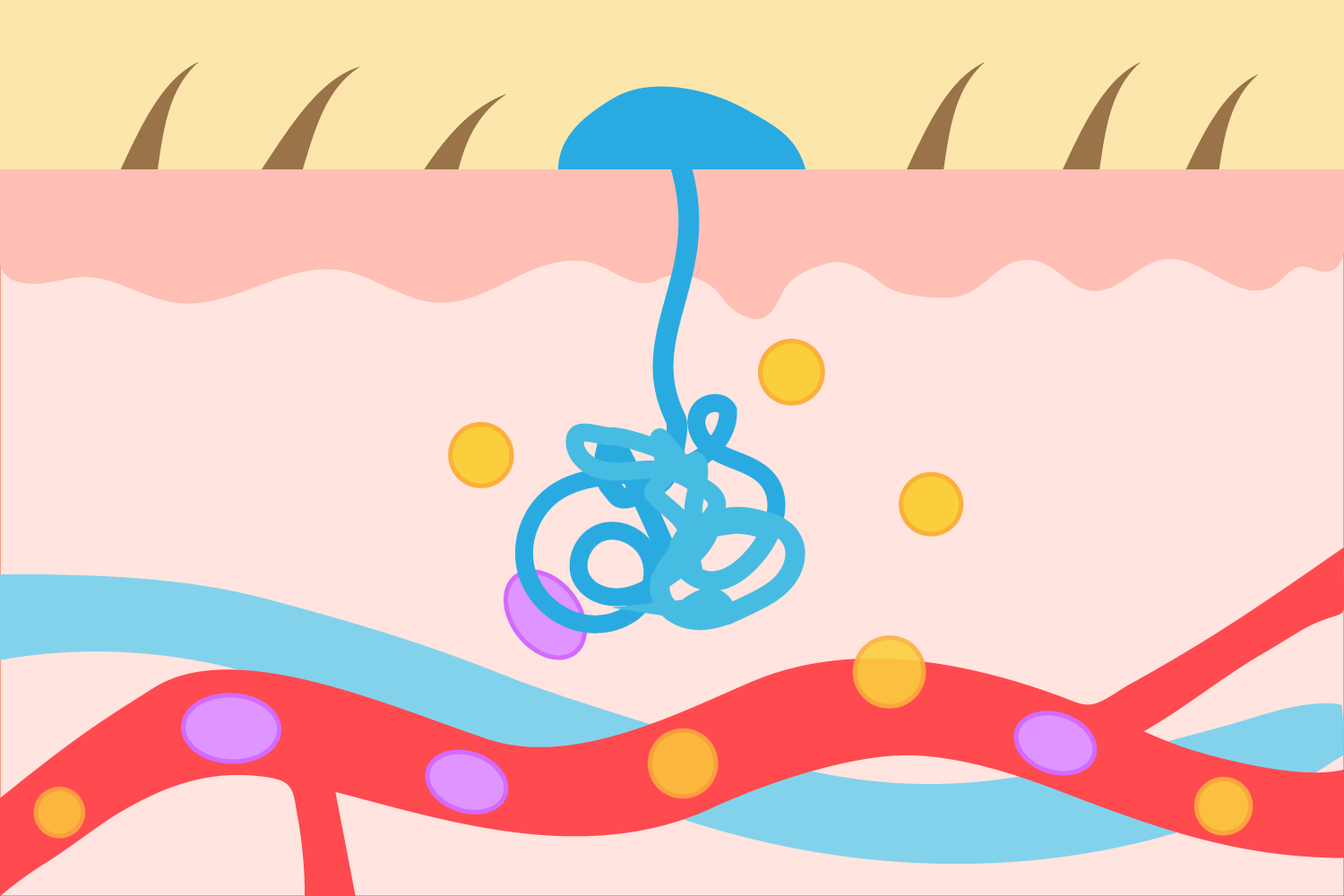It’s more than the yellow pit stains. Everybody sweats, and for varying reasons: heat, physical exertion or school presentation nerves. Emitting from millions of glands, sweat includes more than just water, making it the perfect substance for exploration.
“Sweat is a highly under-explored class of biofluid compared to blood,” said John A. Rogers, Professor of Materials Science and Engineering at Northwestern University.
Of the two types of sweat, apocrine sweat emits from glands surrounding thick hairs, like in the underarms, and is an oily composition of water, proteins, lipids, sugars and ammonia. The more abundantly emitted eccrine sweat is 99% water, with small amounts of solutes such as sodium, chloride and lactate. Doctors used to diagnose babies with cystic fibrosis by tasting their sweat for excessive salt because people with cystic fibrosis are unable to recapture the salt in sweat due to a defective chloride channel in the gland.
Normally, “your body puts the salt in to generate the sweat, but it doesn’t want to give that up because we don’t want to lose our electrolytes,” said Jason Heikenfeld, Professor of Electrical Engineering at the University of Cincinnati and lead inventor at Eccrine Systems.
The company Eccrine Systems is in the process of commercializing devices that can collect sweat and analyze its physiological measurements and are at this time still seeking FDA approval.

Although only present in miniscule portions of eccrine sweat samples, molecules provide clues to what’s happening below our skin’s surface.
“What you see generally is that there's a very good correlation between sweat chemistry and blood chemistry when you're talking about small molecules or ions,” Rogers said.
When small and fat-soluble enough, molecules like estrogen, cortisol and electrolytes diffuse in equal distribution from the blood vessel through the tissue layers into sweat glands. The process can happen within minutes, with eccrine ducts emitting a fresh sample of sweat reflecting blood composition in theory as quickly as two minutes. For larger molecules like glucose, the diffusion process is slower, taking tens of minutes, and thus shows a looser correlation between blood and sweat concentration.
Once a barbaric process of scraping sweat off the body resulting in contamination of skin and oils, sweat research extends its frontiers. Inventors are advancing the technology of biofluid sensors that attach to the skin in the form of a nondescript patch. Heinkenfeld predicts patients personalizing oral drug dosage to the drug’s molecule concentration in sweat.
“The reason why [doctors] can't give you the next dose even though the effect of the medicines has worn off in your body is everyone is so different that they have to play it safe,” Heinkenfeld said.
Rogers is developing a device with a color-changing chemistry that would respond to electrolyte composition, determining the dehydration level of athletes in real time. Though unavailable for purchase, Gatorade has begun promotion of their sponsored device in an ad featuring Serena Williams.
The future of analyzing sweat composition is promising. Measuring glucose could provide a quick screen to determine diabetic status but not definitive enough to help dose insulin; blood alcohol content (BAC) may be detectable from sweat samples; lactate could infer anaerobic muscle activity and conditioning. All these possibilities come with constraints of sample size, diffusion correlation, contamination and immediate evaporation.
If technology can overcome those barriers, “it really makes sweat analytics even more powerful because it would apply to anybody in kind of an office setting," said Rogers. "You could be tracking your sweat chemistry continuously."